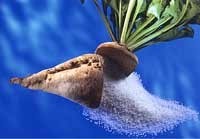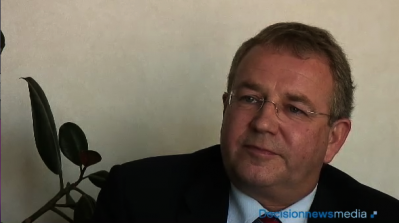Chinese expansion to more than double capacity at JK Sucralose
The expansion programme at its production facility on the Bio-food Technopark, Yancheng City, in China’s Jiangsu Province began in June this year.
The supplier told FoodNavigator.com at FIE in Paris that the upgrade will also enable it to capture more of Asian market growth potential and will give the Chinese sucralose supplier annual capacity of 4,000 tonnes by 2016 and 6,000 tonnes by 2018.
JK Sucralose currently produces 550 tonnes of sucralose annually and expects to reach 1,300 to 1,500 tonnes by mid-2012.
October 2010 saw the company became the first Chinese sucralose manufacturer to be granted government approval for a large scale production expansion project.
Speaking to this publication at the Paris trade event, Alex An, CEO of JK Sucralose, said that 40% of the sucralose supplier’s sales performance is informed by NPD in the bigger markets such as the US and Europe, which represents around $25m in value terms for the company.
“The other 60% of our sales is coming from current customers’ organic growth, which represents around $35m in value terms for us,” he added.
European growth potential
While China and India offer fertile ground for sucralose suppliers due to their rapid development, Europe is not a mature market in terms of sucralose. The sweetener only entered that market in 2004, said the CEO.
“There is great scope for growth within Europe,” said An.
In terms of global sucralose market distribution, the US takes up 45% of usage of the sweentener, Europe; 15%, Asia Pacific: 10%, Latin America: 15% and China: 5%.
In relation to stevia potentially stealing some of sucralose’s market share in Europe, following recent regulatory backing for the natural sweetener, head of JK Sucralose in Europe, Leo Hokke, added:
"The restricted food and beverage categories for stevia in the EU, the costs around its extraction process and the challenges involved in masking the natural sweetener’s bitter notes means sucralose producers are not concerned about stevia making any major inroads into any of their markets."
Price trends
Meanwhile, the JK Sucralose CEO puts the ongoing decline in global prices for sucralose down to “breakthroughs in sucralose manufacturing technologies and the resulting yield improvements.”
The supplier also notes an increase in demand for sucralose based on the long-term global trend towards reducing calorie content in foods and beverage in an effort to help stem the rising tide of diabetes and obesity in both developed and emerging markets.
In addition, currently high sugar prices may mean some manufacturers are looking to use a higher proportion of sweeteners in blends so as to keep costs down. Sucralose is also seen as a benefit that it is very stable under varying heat conditions, a property that makes it attractive for use in warmer climates, such as much of Asia.
















